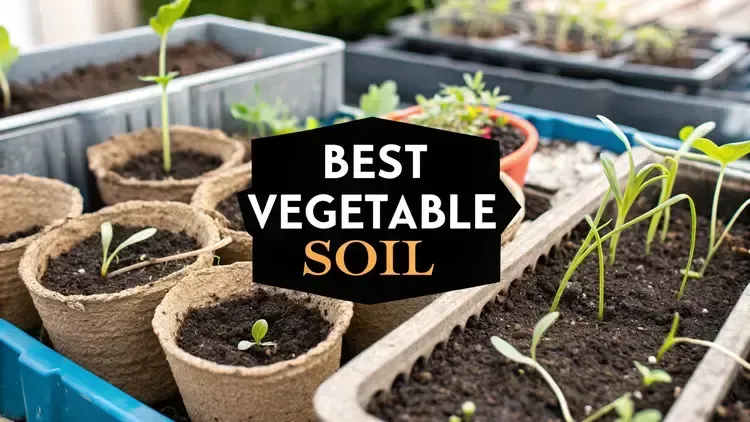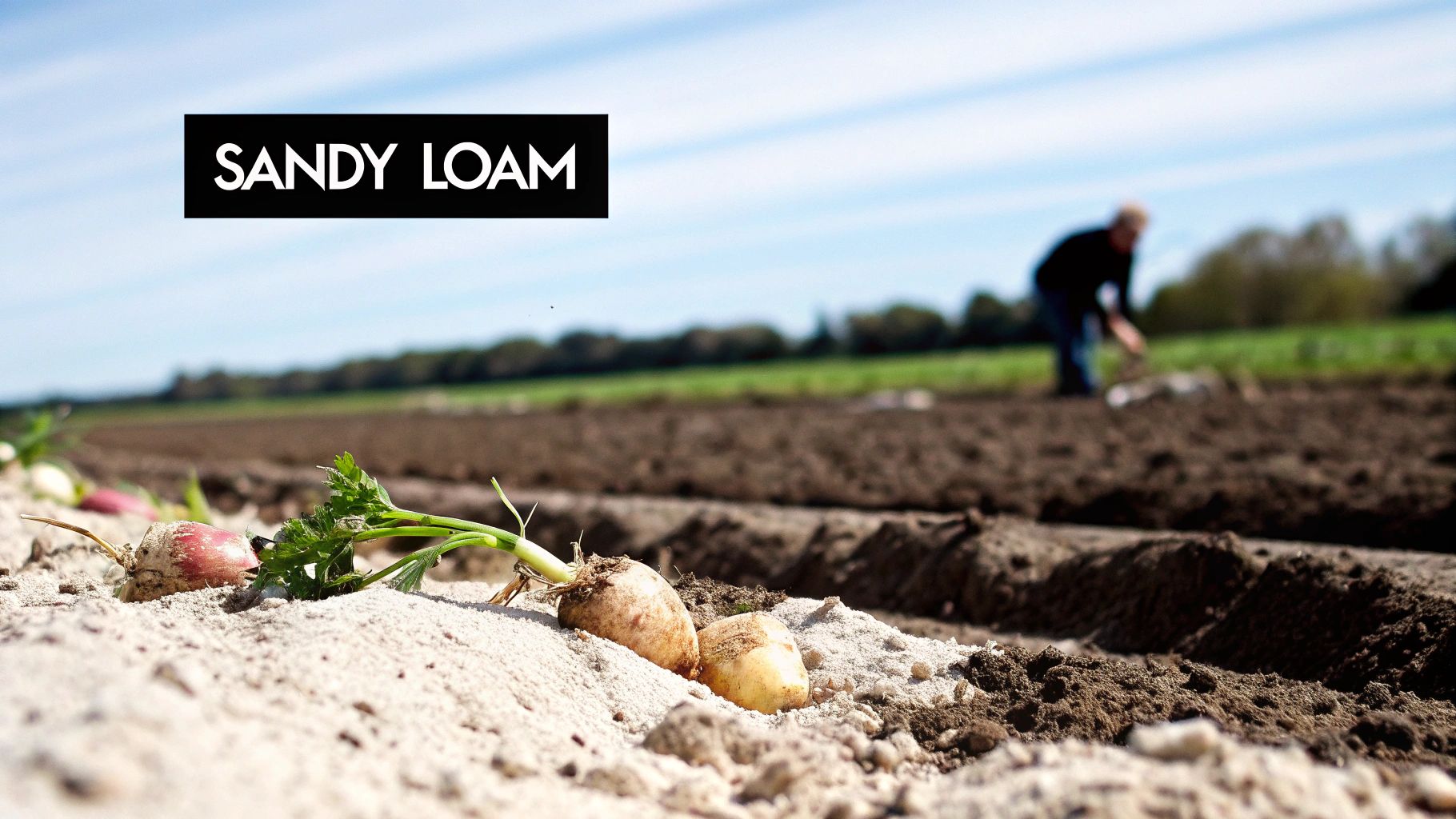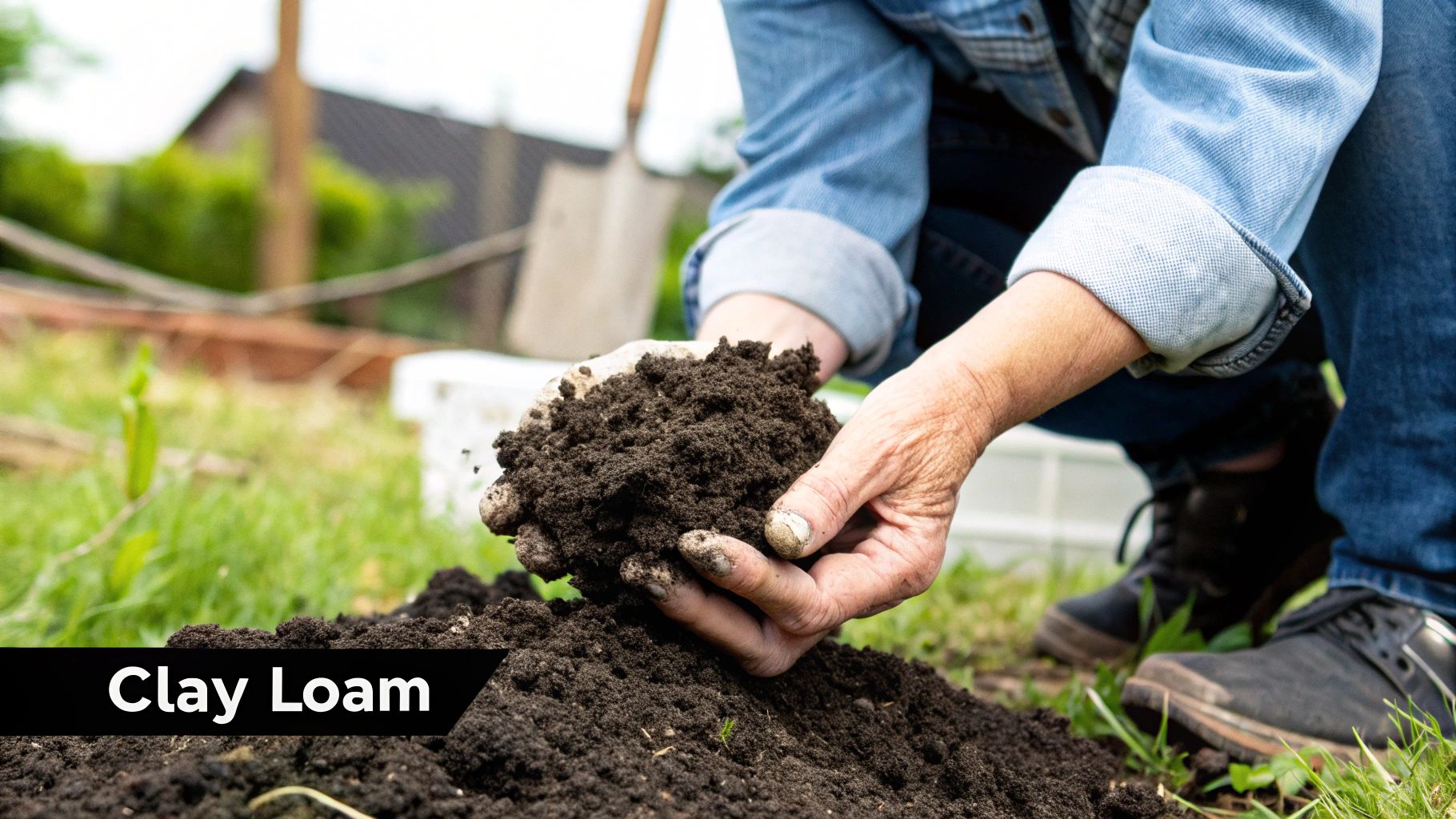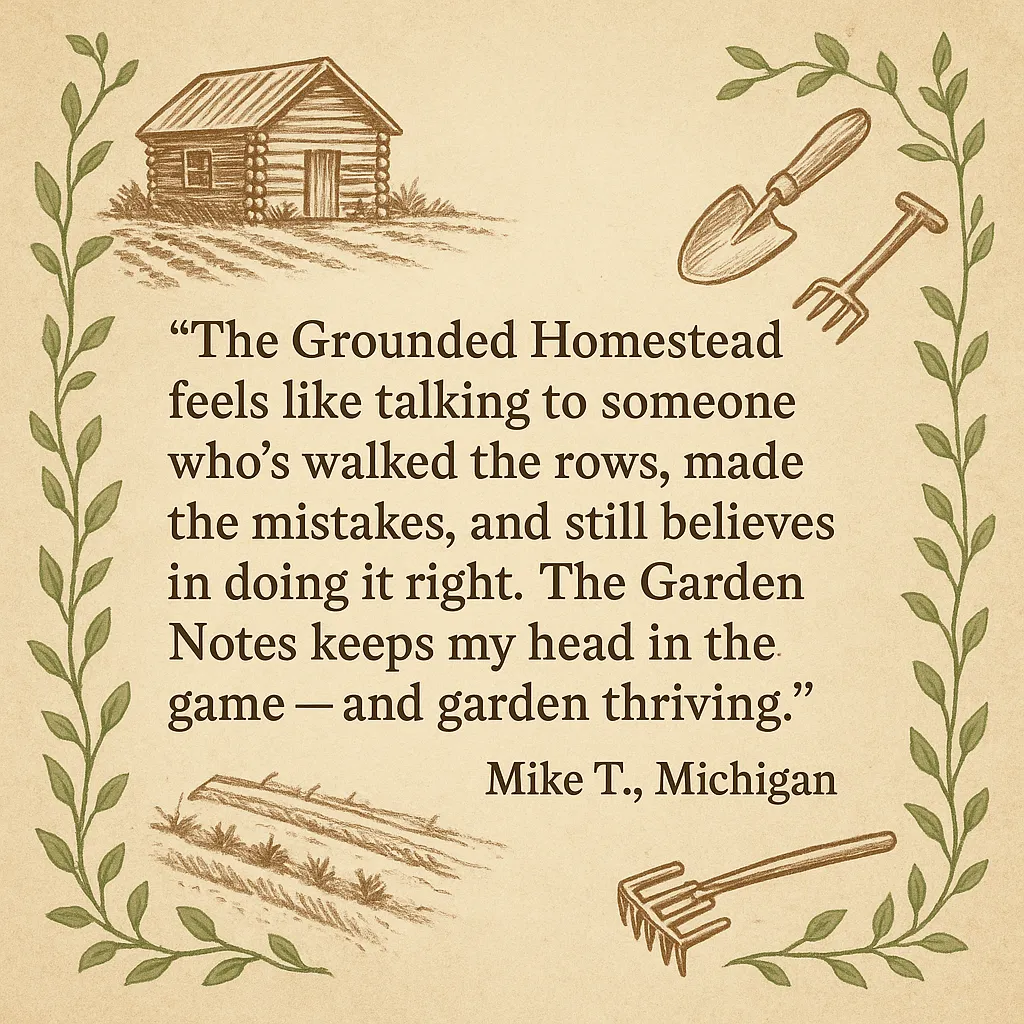
7 Best Soil Types for Growing Vegetables Options for 2025
7 Best Soil Types for Growing Vegetables Options for 2025
7 Best Soil Types for Growing Vegetables Options for 2025
7-Soil Types Growing Suitability Comparison
Cultivating Success: Your Journey to the Perfect Garden Soil Starts Now
The foundation of any successful vegetable garden isn't just sunlight and water; it's the very ground your plants call home. Choosing the right soil is the single most impactful decision you can make to ensure vigorous growth, bountiful harvests, and resilient plants. The wrong soil can lead to waterlogged roots, nutrient deficiencies, and stunted crops, turning a season of hard work into a frustrating exercise. Understanding the composition and structure of your growing medium is crucial for cultivating everything from crisp lettuce and juicy tomatoes to hearty root vegetables.
This guide is designed to demystify the process of selecting the best soil for growing vegetables. We will move beyond generic advice and delve into the specific types of soil and soil mixes that deliver consistent, high-quality results. Whether you are starting a new garden bed, filling raised planters, or amending an existing plot, the information here will provide a clear roadmap.
You will learn to identify and understand the core characteristics of several top-performing soil types, including:
The ideal balance of loam soil.
The unique properties of sandy, clay, and silt loams.
How to create a custom, well-amended garden soil.
Formulations specifically designed for raised beds.
The indispensable role of compost-rich soil.

For each option, we will break down its key features, practical advantages, and potential drawbacks. By the end of this article, you will have the knowledge to confidently choose or create the perfect soil environment, setting your vegetable garden up for a season of exceptional productivity and health.
1. Loam Soil
Often called the "gardener's gold," loam soil is the ideal medium for growing a vast array of vegetables. It represents the perfect synergy of three different mineral particles: sand, silt, and clay. This balanced composition makes it arguably the best soil for growing vegetables, as it avoids the extremes of poor drainage (clay) or excessive water loss (sand).
Loam soil’s magic lies in its structure. The larger sand particles create air pockets, ensuring excellent aeration for healthy root development and preventing waterlogging. Silt particles, which are smaller, help retain moisture and nutrients, while the even smaller clay particles bind the soil together and hold onto essential minerals. This trifecta creates a fertile, well-draining, and easy-to-work-with soil that supports robust plant growth.
Why Loam is the Gold Standard
Loam is prized by gardeners and farmers worldwide for its versatility and productivity. Iconic agricultural regions, from the fertile prairie soils of the American Midwest to the famous market gardens in Pennsylvania Dutch country, owe their success to naturally occurring loam. It provides a stable foundation that allows plant roots to access oxygen, water, and nutrients in perfect harmony.
The following infographic highlights the core components that define this superior soil type.

These ideal ratios for particle mix, pH, and organic matter create the optimal environment for most common garden vegetables to thrive.
Practical Tips for Cultivating Loam
If you aren't blessed with natural loam, you can create it. The goal is to amend your existing soil to achieve that coveted balance.
Test Your Soil: Before adding anything, perform a simple "jar test" to understand your soil's current composition of sand, silt, and clay. This gives you a baseline to work from.
Annual Compost Application: Top-dress your garden beds with 2-3 inches of high-quality compost each year. This is the single most effective way to improve any soil type, as it boosts organic matter, improves structure, and adds vital nutrients.
Mind Your pH: Most vegetables prefer a slightly acidic to neutral pH (6.0 to 7.0). Use a soil test kit to check your pH level and amend with lime to raise it or sulfur to lower it as needed.
Before adding compost or amendments, I always recommend using a simple soil test kit like this one to get a clear read on your garden's pH and nutrient levels.

Avoid Compaction: Never walk on or work your soil when it is wet. This can crush the air pockets and lead to a dense, compacted structure that harms root growth.
Creating the perfect soil structure is a foundational step in your gardening journey. For those just starting out, understanding how soil fits into your overall strategy is crucial. You can find comprehensive advice in our guide to garden planning for beginners. By focusing on building and maintaining a loamy texture, you set the stage for a healthy, productive vegetable garden.
2. Sandy Loam
While perfect loam is the ideal, sandy loam offers its own unique advantages, making it an excellent choice for specific gardening goals. This soil type features a higher concentration of sand particles, typically between 50-70%, balanced with smaller amounts of silt and clay. This composition results in a lighter, looser soil that drains exceptionally well and warms up faster in the spring.

The primary benefit of sandy loam is its superb aeration and drainage, which prevents waterlogged roots, a common cause of plant failure. This quality makes it particularly well-suited for root vegetables like carrots, parsnips, and potatoes, which need loose soil to expand without obstruction. The quick-warming nature of sandy soil also gives gardeners a head start on the growing season, allowing for earlier planting of cool-season crops.
Why Sandy Loam Excels for Specific Crops
Sandy loam is the soil of choice in many productive agricultural areas known for specific crops. The famous potato farms of Prince Edward Island, Canada, and the prolific carrot-growing regions in the Netherlands leverage the loose structure of sandy loam for high-quality yields. Similarly, coastal vegetable farms in California and market gardens in sandy river deltas rely on this soil type to produce premium root vegetables and early-season greens.
Its structure is the key. The reduced clay content means the soil is less prone to compaction, staying light and workable even after rain. This friable texture is not just good for root crops; it also benefits plants that are sensitive to "wet feet," such as rosemary, thyme, and lavender. For many gardeners, this soil is a strong contender for the best soil for growing vegetables, especially when focusing on specific crop types.
Practical Tips for Cultivating Sandy Loam
If your garden has naturally sandy soil, your goal is to enhance its water and nutrient-holding capacity without sacrificing its excellent drainage.
Boost Organic Matter: This is the most critical step. Annually incorporate 2-4 inches of well-rotted compost or manure. Organic matter acts like a sponge, dramatically improving moisture retention and providing a slow release of nutrients.
Use Mulch Generously: Apply a thick layer of organic mulch, such as straw, wood chips, or shredded leaves, around your plants. Mulching significantly reduces water evaporation from the soil surface, keeping roots cool and moist.
Consider Drip Irrigation: Because water drains through sandy soil quickly, frequent, light watering is more effective than occasional deep soaks. Drip irrigation or soaker hoses deliver water directly to the root zone, minimizing waste and ensuring consistent moisture.
Plant Cover Crops: In the off-season, plant cover crops like clover or vetch. These "green manures" protect the soil from erosion and can be tilled back in to add valuable organic matter and nitrogen.
Adjust Your Fertilizing Strategy: Nutrients can leach out of sandy soil along with water. Use slow-release organic fertilizers or apply smaller amounts of liquid fertilizer more frequently to ensure your plants have a steady supply of food.
3. Clay Loam
While often seen as challenging, clay loam is a powerhouse soil that offers exceptional fertility and moisture retention, making it one of the best soil types for growing heavy-feeding vegetables. It consists of a higher percentage of clay particles (typically 20-35%) mixed with sand and silt. This composition means it holds onto water and nutrients far longer than sandier soils, providing a consistent supply for demanding plants.
The strength of clay loam is this soil's ability to hold a massive reserve of plant nutrients. The tiny, electrically charged clay particles bind to essential minerals like calcium, potassium, and magnesium, preventing them from leaching away with rainwater. When managed correctly, this nutrient-rich foundation can support incredibly lush and productive vegetable gardens.
Why Clay Loam is a Fertility Powerhouse
Clay loam's reputation for high fertility is well-earned and historically significant. Some of the world's most enduring agricultural areas, like the fertile Nile Delta and the intensive market gardens of Italy's Po Valley, are built on clay-rich soils. It excels at supporting heavy-feeding crops that require constant access to water and nutrients, such as corn, squash, and brassicas like broccoli and cabbage.

While its structure can be heavy, its capacity for holding nutrients and water makes it ideal for gardens that can be properly amended and managed.
Practical Tips for Managing Clay Loam
The key to unlocking clay loam's potential is improving its structure and drainage. With a few amendments, you can transform it from dense and difficult to rich and workable.
Improve Structure with Organic Matter: This is the most crucial step. Annually incorporate coarse organic materials like compost, shredded leaves, or well-rotted manure. These materials force the small clay particles apart, creating air channels for better drainage and root respiration.
Work it When It's "Just Right": Never work clay soil when it is very wet (it becomes a sticky mess) or bone dry (it turns rock-hard). The ideal time is when it is moist and crumbles easily in your hand. Working it at the wrong time will severely compact the soil.
Use Raised Beds: Building raised beds is an excellent strategy. It allows you to fill them with a well-amended soil mix and ensures superior drainage, as the water can escape from the sides and bottom, preventing waterlogged roots.
Consider Gypsum: Agricultural gypsum can be a helpful amendment for heavy clay soils. It works chemically to cause the fine clay particles to clump together (a process called flocculation), which improves soil structure and drainage without altering the pH.
4. Silt Loam
Often found in fertile river valleys and ancient floodplains, silt loam is a powerhouse of productivity for vegetable gardeners. This soil type is defined by its high concentration of silt particles (typically 50-80%), which gives it a distinctively smooth, almost soapy or floury feel when dry. This composition makes it one of the best soils for growing vegetables, especially those that thrive in consistently moist, nutrient-rich conditions.
Silt loam’s excellence comes from its particle size. Silt particles are smaller than sand but larger than clay, allowing them to hold a significant amount of plant-available water without becoming waterlogged. This high moisture retention capacity is paired with good natural fertility, as silt is often composed of finely weathered rock minerals that release nutrients over time. It offers a stable, fertile environment that supports vigorous root systems and lush foliage.
Why Silt Loam is a Production Powerhouse
Silt loam is renowned for its agricultural prowess and is the foundation of many of the world's most productive farming regions. Famous agricultural areas, such as the fertile vegetable farms in the Mississippi River valley and the high-yield vegetable operations in eastern Washington, depend on this soil's superior qualities. Its ability to retain moisture and nutrients makes it ideal for consistent, large-scale vegetable production.
This soil type creates an environment where plants rarely suffer from drought stress, allowing them to focus their energy on growth. Its texture is easy for roots to penetrate, leading to well-developed root systems that can efficiently access water and nutrition. Leafy greens like lettuce and spinach, as well as root crops like carrots and radishes, perform exceptionally well in silt loam.
Practical Tips for Cultivating Silt Loam
While naturally fertile, silt loam has unique characteristics that require specific management to maintain its structure and productivity.
Avoid Compaction: Silt soils are highly susceptible to compaction, especially when wet. Avoid walking on or tilling your garden beds after a rain. Working wet silt loam can destroy its structure, creating a dense, brick-like layer that roots cannot penetrate.
Use Organic Mulch: A 2-3 inch layer of organic mulch (like straw, shredded leaves, or wood chips) is crucial. It prevents the soil surface from forming a hard crust when it dries and helps maintain consistent moisture levels while suppressing weeds.
Plant Cover Crops: Planting cover crops like clover or vetch in the off-season is an excellent way to protect and improve silt loam. Their roots help maintain good soil structure, prevent erosion, and add valuable organic matter when tilled back into the soil.
Add Organic Matter: Annually incorporating compost is the best way to enhance silt loam. Organic matter helps bind the fine silt particles into larger, more stable aggregates, which improves both aeration and drainage, making an already great soil even better.

5. Well-Amended Garden Soil
Instead of being a naturally occurring soil type, well-amended garden soil is the result of deliberate, long-term cultivation. It represents any base soil, whether clay, sand, or silt, that has been systematically improved over multiple seasons with organic matter and conditioners. This patient approach transforms even poor, challenging ground into a fertile, productive medium perfectly suited for growing vegetables.
The core principle is continuous improvement. Rather than seeking a quick fix, the gardener acts as a soil steward, adding compost, manures, and other amendments year after year. This process builds a deep, dark, and friable topsoil that is rich in microbial life, holds moisture effectively, and provides a steady release of nutrients. This makes it one of the most sustainable and rewarding ways to create the best soil for growing vegetables right in your own backyard.
Why Well-Amended Soil is a Gardener's Legacy
This method is the foundation of countless successful gardens, from biointensive market farms to productive urban plots built on formerly neglected land. Pioneers like the Rodale Institute and John Jeavons (of the GROW BIOINTENSIVE method) have demonstrated that building soil health is the key to resilient and high-yielding agriculture. It creates a robust ecosystem that supports strong plants, reduces the need for synthetic fertilizers, and improves with each passing year.
This ongoing process of soil building is a testament to the power of regenerative gardening, turning a simple plot into a living, thriving legacy.
Practical Tips for Building Your Soil
Creating exceptional soil is a marathon, not a sprint. The goal is to consistently add diverse organic materials to foster a rich soil food web.
Start with a Soil Test: A comprehensive soil test is your roadmap. It reveals your soil’s texture, pH, organic matter content, and nutrient levels, telling you exactly what you need to add or adjust.
Annual Compost Application: This is non-negotiable. Aim to top-dress your garden beds with 2 to 4 inches of high-quality, mature compost every single year, preferably in the fall or early spring.
Use Diverse Amendments: Don't just rely on compost. Incorporate a variety of materials like aged manure, leaf mold, worm castings, and green manures (cover crops) to provide a broad spectrum of nutrients and minerals.
Monitor and Maintain pH: Most vegetables thrive in a pH range of 6.0 to 7.0. Test your soil annually and use amendments like lime to raise pH or elemental sulfur to lower it, making small adjustments as needed.
Keep Good Records: Track what you add, when you add it, and how your plants respond. This record-keeping will help you refine your approach and understand your garden's unique needs over time.
For a deeper dive into the philosophy behind this soil-first approach, explore the methods championed by the Rodale Institute, which has been a leader in organic agriculture research for decades. By focusing on building soil from the ground up, you create a foundation for a garden that is not only productive but also truly regenerative.
6. Raised Bed Soil Mix
Raised bed soil mix is less a soil type and more a custom-built growing medium, engineered specifically for the unique environment of a raised garden bed. This approach allows gardeners to completely bypass the limitations of poor native soil, such as heavy clay, sand, or contamination. It offers total control over the growing environment by creating the ideal soil from scratch.
The power of a raised bed mix lies in its formulation. It is typically a blend of topsoil, compost, and materials that promote drainage and aeration, like vermiculite or perlite. This combination is intentionally lighter and fluffier than native garden soil, preventing the compaction that can occur in a contained space. This creates what many consider the best soil for growing vegetables in a controlled setting, ensuring perfect drainage, nutrient availability, and root aeration.
Why Raised Bed Mix is the Gold Standard for Control
Raised bed gardening, and the specific soil mixes it requires, have revolutionized small-space and urban agriculture. Pioneering methods like Mel Bartholomew's Square Foot Gardening and Eliot Coleman's intensive systems rely on creating a perfect, manageable growing medium. This allows for incredibly high yields in small spaces, from productive school gardens to thriving rooftop vegetable farms.
The precise control over soil composition means you can tailor the mix to the exact needs of your plants. It eliminates guesswork and provides a clean slate, free from weed seeds and soil-borne diseases that might plague the ground below. This makes it an ideal solution for beginners and experienced growers alike who seek consistent, reliable results.
Practical Tips for Creating a Raised Bed Mix
Creating your own high-performance raised bed mix is more straightforward than it sounds. The goal is to balance moisture retention, drainage, and long-term fertility.
Follow the Classic Formula: A widely celebrated recipe is the "Mel's Mix" from Square Foot Gardening: one-third compost, one-third peat moss or coco coir (for moisture retention), and one-third coarse vermiculite (for aeration). This creates a lightweight, nutrient-rich, and friable soil.
If you're skipping peat moss, a sustainable and beginner-friendly alternative is Gro-Med Coco Coir Bricks. They hydrate easily and add just the right texture and moisture balance to raised bed mixes.
Plan for Depth: Ensure your raised bed is deep enough for the vegetables you want to grow. Root vegetables like carrots need at least 12 inches of soil depth, while leafy greens can thrive in 6-8 inches.
Incorporate Slow-Release Nutrients: Mix a balanced, slow-release organic fertilizer into the soil at planting time. This provides a steady supply of nutrients throughout the growing season, reducing the need for frequent liquid feeding.
Top Up Annually: At the beginning of each season, refresh the top 2-3 inches of your bed with fresh compost. This replenishes the organic matter and nutrients consumed by the previous year's crops.
Consider Drip Irrigation: Raised beds can dry out faster than in-ground gardens. Installing a drip irrigation or soaker hose system provides consistent moisture directly to the plant roots, improving water efficiency and plant health.
Building the structure of your garden is the first step toward this controlled growing method. You can find detailed instructions and plans in our complete guide to building a raised garden. By investing in a quality soil mix, you give your plants the perfect foundation for success.
7. Composted Soil
Often called "black gold," composted soil is less a specific soil type and more a powerful amendment that can transform poor ground into a thriving vegetable garden. It is created through the controlled decomposition of organic materials like leaves, grass clippings, and kitchen scraps. This process results in a dark, crumbly, and incredibly nutrient-rich medium that is teeming with beneficial microbial life.
The true value of composted soil is its ability to improve any existing soil structure. When added to heavy clay, it improves drainage and aeration. When mixed into sandy soil, it dramatically increases water and nutrient retention. This biological activity is key, as the microorganisms in compost help unlock nutrients, making them readily available to plant roots and defending against common soil-borne diseases. This makes it a cornerstone of sustainable gardening and a top contender for the best soil for growing vegetables.
Why Composted Soil is the Foundation of Fertility
Composted soil is the engine of many successful organic farming and gardening operations. Its ability to recycle waste into a premium growing substrate is unparalleled. From large-scale commercial organic farms with massive windrow composting systems to urban community gardens with shared bins, the principle is the same: build fertility from the ground up. Permaculture designs often integrate composting directly into the garden beds, creating self-sustaining, highly productive ecosystems.
Key Insight: Unlike synthetic fertilizers that offer a short-term nutrient boost, compost builds long-term soil health. It improves structure, boosts microbial life, and provides a slow, steady release of nutrients for sustained plant growth.
The transformative power of compost makes it essential for creating fertile, resilient garden beds, regardless of your starting soil conditions.
Practical Tips for Making and Using Compost
Creating your own compost is one of the most rewarding and impactful gardening activities you can undertake. The goal is to manage the decomposition process to create a balanced, stable final product.
Balance Your Greens and Browns: Aim for a carbon-to-nitrogen (C:N) ratio of roughly 30:1. "Browns" (carbon) include dried leaves, straw, and cardboard, while "Greens" (nitrogen) include kitchen scraps, grass clippings, and coffee grounds.
Aerate Regularly: Turn your compost pile every one to two weeks with a pitchfork. This introduces oxygen, which is crucial for the aerobic bacteria that drive the decomposition process and prevents smelly, anaerobic conditions.
Monitor Temperature and Moisture: A healthy compost pile should feel like a wrung-out sponge and will heat up to 130-160°F in its core. This heat is a sign of active decomposition and is essential for killing weed seeds and pathogens.
If you’re building compost at home, a good compost thermometer like this one lets you track the heat and know when your pile is active or needs turning.

Screen and Age the Finished Product: Once the compost is dark, crumbly, and has an earthy smell, screen it through a half-inch hardware cloth to remove any large, unfinished pieces. For best results, let the finished compost age for a few months to stabilize before adding it to your vegetable beds.
Building healthy soil through composting is a journey, not a destination. For a deeper dive into various methods and best practices, you can explore more resources about Compost & Mulch on thegroundedhomestead.com. By mastering compost, you gain the power to create exceptional soil, ensuring a bountiful harvest year after year.
7-Soil Types Growing Suitability Comparison

Cultivating Success: Your Journey to the Perfect Garden Soil Starts Now
Navigating the world of garden soil can feel like learning a new language, with terms like loam, tilth, and amendment creating a complex landscape. However, as we've explored, understanding these core components is the single most impactful step you can take toward a thriving, productive vegetable garden. The journey to finding the best soil for growing vegetables isn't about finding a single "magic" product; it's about understanding the living, breathing ecosystem beneath your feet and empowering yourself to cultivate it.
We've broken down the premier soil types, from the naturally balanced perfection of loam to the specialized, high-performance world of raised bed mixes. Each option represents a different starting point and a unique path to gardening success. Your "best" soil is the one that meets the needs of your chosen plants, fits your garden's structure, and aligns with your personal gardening philosophy.
Key Takeaways: From Soil Science to Garden Harvest
Let's distill our deep dive into a few foundational truths that will guide your every gardening decision. Mastering these concepts will transform you from a passive planter into a proactive and knowledgeable cultivator.
Structure is Everything: The ideal soil, regardless of its name, provides a balance of air, water, and nutrients. Clay holds moisture, sand provides drainage, and silt offers fine, nutrient-rich particles. The goal is always to achieve a harmonious blend of these properties.
Loam is the Benchmark: Loam isn't just a soil type; it's the gold standard. Whether you are blessed with natural loam or are building it yourself through amendments, its balanced texture and fertility are what we strive to replicate.
You Are the Soil Builder: Rarely is garden soil perfect from the start. Your most crucial role as a gardener is that of a soil builder. Through the consistent addition of organic matter like compost, you are actively improving soil structure, boosting fertility, and creating a resilient foundation for your plants.
Context Determines the "Best" Soil: The best soil for growing vegetables in a container is different from the best soil for an in-ground plot or a raised bed. Your gardening method dictates your soil requirements. A raised bed mix is engineered for drainage and nutrient density in a confined space, while amending native soil is about improving what you already have.
Your Actionable Next Steps to Soil Mastery
Knowledge is only powerful when applied. It's time to get your hands dirty and translate these insights into tangible results. Here is your roadmap to building the garden of your dreams, starting from the ground up.
Assess Your Foundation: Before you buy or add anything, understand your starting point. Use the simple "jar test" or "squeeze test" mentioned earlier to identify your native soil type. Is it heavy clay, fast-draining sand, or something in between?
Define Your Garden Structure: Decide on your gardening method. Are you planting directly in the ground, building raised beds, or using containers? Your answer will immediately narrow down your soil choices.
Source Your Core Ingredient - Compost: Regardless of your path, compost is your most valuable ally. Start your own compost pile today or source high-quality, well-rotted compost from a local nursery. This is the one amendment you will never regret adding.
Create a Blending Plan: Based on your assessment and garden type, create a simple soil plan. For example:
Heavy Clay Soil: Plan to amend with 3-4 inches of compost and possibly coarse sand to improve drainage and tilth.
New Raised Beds: Plan to purchase or mix a blend of topsoil, compost, and vermiculite or perlite for aeration.
Sandy Soil: Plan to incorporate compost and peat moss or coco coir to drastically improve water and nutrient retention.
Ultimately, investing time and effort into your soil is an investment in the health of your plants, the quality of your harvest, and the joy of the gardening process. A well-tended soil bed doesn't just support this year's crop; it becomes more fertile and resilient over time, building a legacy of abundance for seasons to come. You are not just growing vegetables; you are cultivating life itself.
Ready to take your homesteading and gardening skills to the next level with expert guidance? At The Grounded Homestead, we provide comprehensive resources, courses, and community support designed to empower you on your self-sufficiency journey. Explore our proven frameworks for everything from soil science to food preservation at The Grounded Homestead.
As always, the tools and supplies I mention are the same ones I rely on here at The Grounded Homestead. Some are affiliate links, which means I may earn a small commission—at no extra cost to you—but every recommendation is based on real use and trust.


Facebook
Instagram
X
Youtube